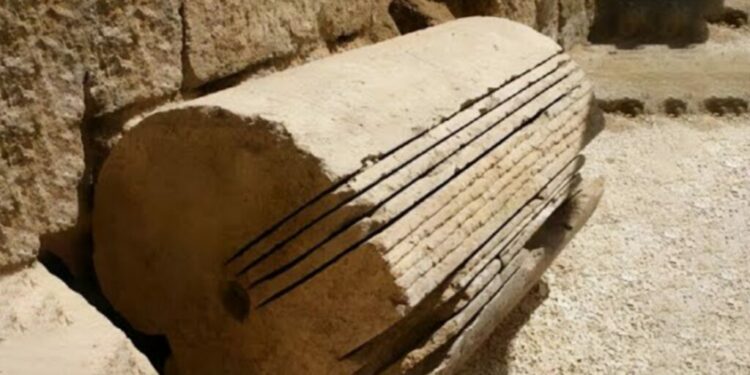First Artificial Colors Were Created By Ancient Egyptians?:
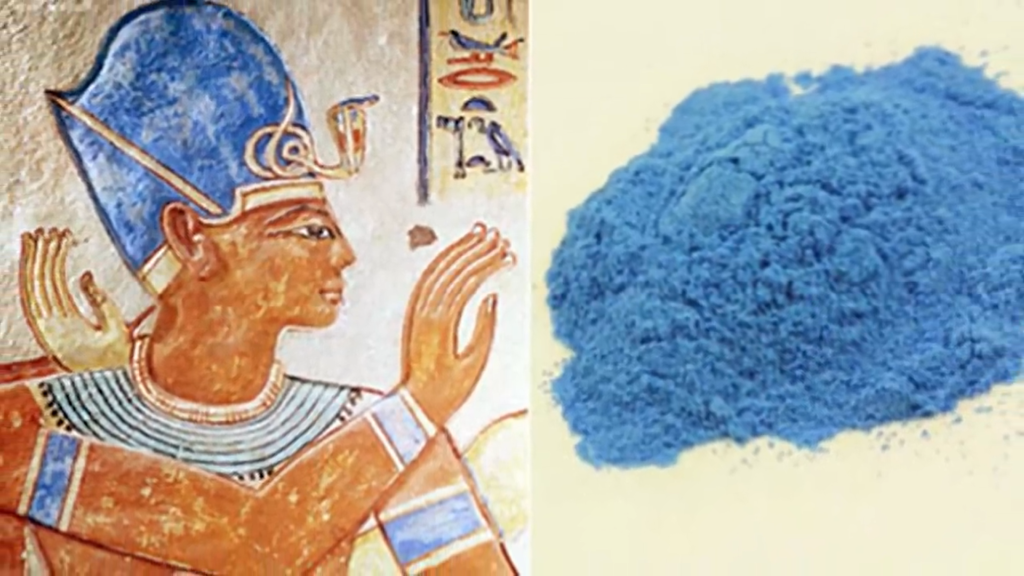
We have no way of knowing whether the chemists who came up with it were aware of what they were doing at the time, but there’s far more to this pigment than just a pretty color.
This brilliant shade of blue can reduce energy consumption and can also amplify solar energy output if applied in the right way.
In early 2020 a German research team even used Egyptian blue to create new nanosheets for infrared imaging.
To give the substance its proper name Egyptian blue is a calcium copper silicate and is thought to be one of the first-ever artificial colors ever created by human hands.
It’s a stunning color and was used in the time of the New Kingdom to decorate everything from statues to sarcophagi.
When a very thin layer is exfoliated from a grain of the pigment, a nanosheet one 1,000 times thinner than a human hair can be created, and the properties of that sheet are ideal for optical imaging.
Now that we know that this ancient substance might be responsible for the next great era of microscopy.
5,000-Years-Old Ancient Water System In Iran:
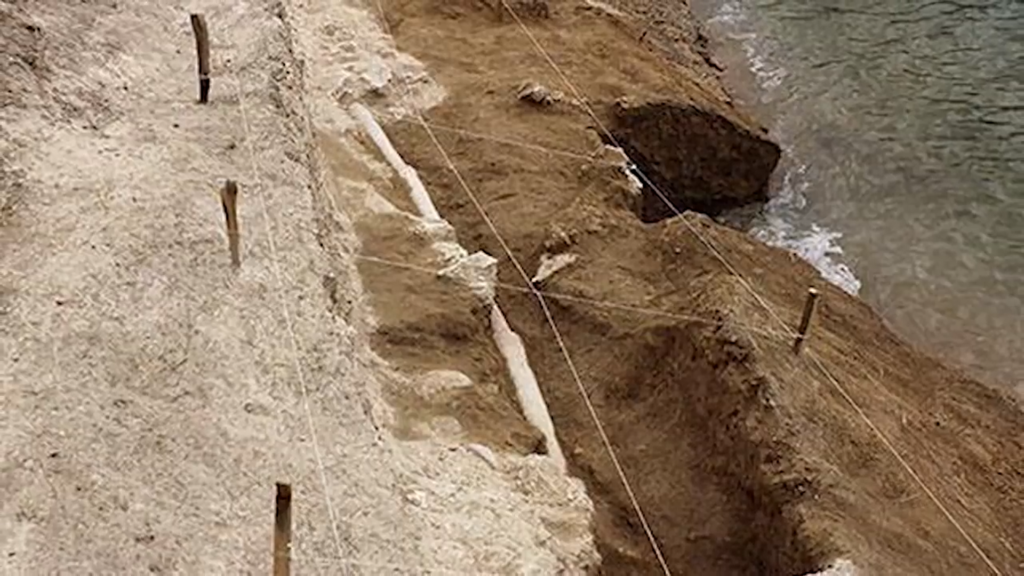
A human-made water system that’s more than 5,000 years old! Although the site is known as a dam, hence the clue in the name of the dam that stands there today is comparatively a recent creation.
Nobody had any idea that it sat right on top of a much more ancient waterway, and yet the pipes of that waterway are still there for all to see.
Perhaps we shouldn’t be so surprised the ancient Persians were masters at building waterways and were capable of building aqueducts long before the Romans.
This waterway isn’t an aqueduct, but it’s an impressive system of pipes connecting a small pool to the site of an old settlement across a long distance.
The pipes appear to have been made from mud baked and shaped in the region.
The biggest problem facing the archaeologists now is that they have a race against time to excavate the entire pipeline before the new dam is filled and the old system is flooded forever.
Mysterious Saw Markings In Ancient Egypt:

How did they cut through massive heavy thick stones and rocks with seemingly the same level of ease we cut through butter today?
The largest construction companies in the world would struggle to replicate Egypt’s great monuments. Yet, we’re asked to believe that the ancient Egyptians created them with nothing more than basic hand tools.
We’re not so sure that we think they may have had powerful saws! The most obvious sign of that comes from the sarcophagus inside the King’s Chamber of the Great Pyramid of Giza.
The marks on the bottom of the box could only have been made by a saw and would have had to have been a very large saw too. We can’t say for sure what kind of teeth the saw might have had, but there’s little disputing the clear evidence that a saw was used.
What happened to the stone-cutting technology of the ancient Egyptians, and why have we never found any modern trace of it?
Mouth Of Truth:
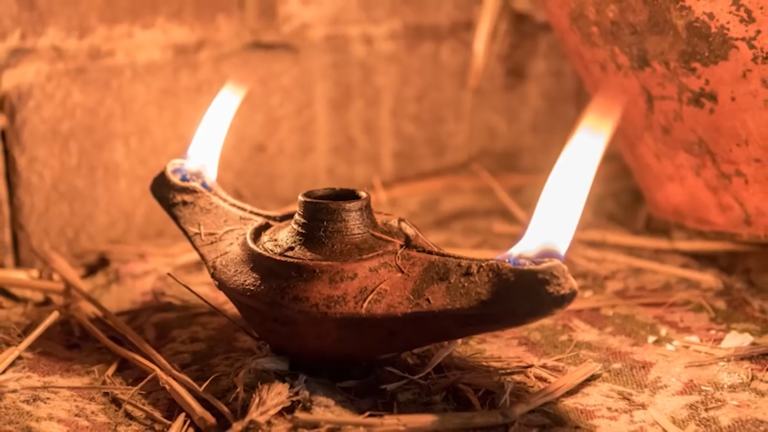
In the film, this enormous ancient stone, the name of which translates as the mouth of truth is said to be able to tell when someone is telling lies.
All they have to do is place their hand inside the mouth of the sculpture and speak. If they tell a lie, the mouth is supposed to snap shut and sever their hand.
Some people believe the story was just made up from the film and that the stone is nothing more than an ancient and ornate drain cover. But who would go to the trouble of carving the face of the mighty see God Oceanus in a simple drain cover and why?
We prefer to believe the legends associated with the 2,200-year-old marble disk, which claimed that the story in the movie is actually based on an ancient truth.
Forget Jerry Springer’s lie detectors, this statue was sorting truth from lies thousands of years before Jerry was born.
Mysterious Ancient Lamp That Burns Forever!
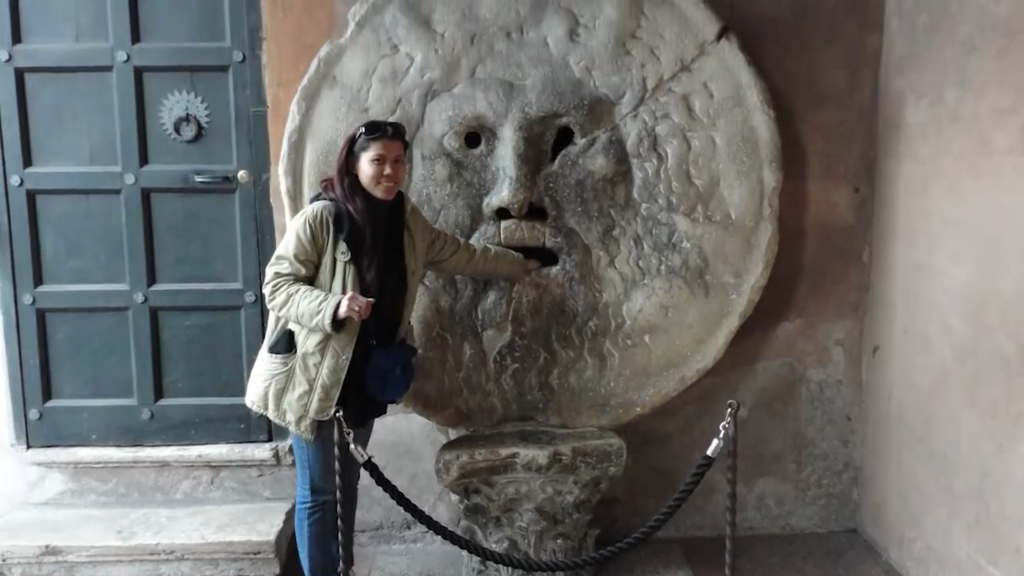
It’s the mystery of lamps that burn forever! No source of light other than the Sun ought to burn indefinitely, but there are stories from all over the planet of tombs that contained lamps that were still burning when they were discovered and opened thousands of years after they’d been sealed.
The lamp that stood over the door of the temple in Egypt’s Jupiter was said by the writer Plutarch to carry on burning even in wind and rain!
There are records of similar lamps at the temple in Armenia, and the Temple of Apollo Carneia said, Serene. They’ve even been recorded in England when King Henry the eighth turned against the Catholic Church and ordered the destruction of Catholic structures.
A tomb that had been sealed since the fourth century was disturbed as the church above it was demolished. Inside that tomb was, as you may have guessed, a lamp that was still burning.

